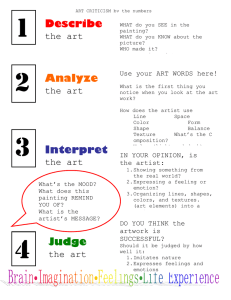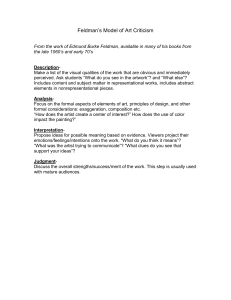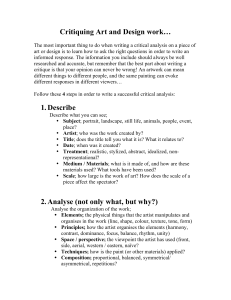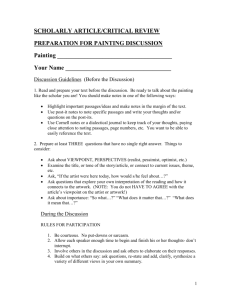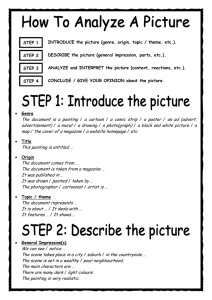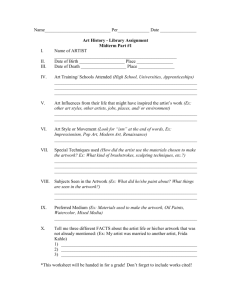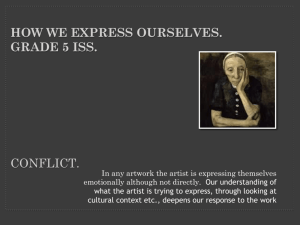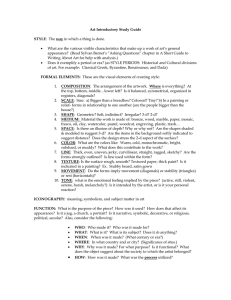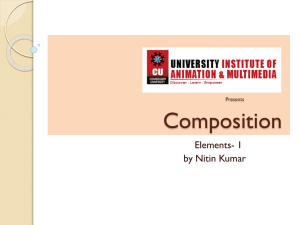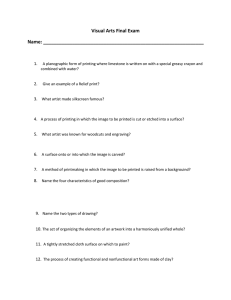Pre- Assessment 1- Art Two Fall, 2014 DO NOT WRITE ON THIS
advertisement
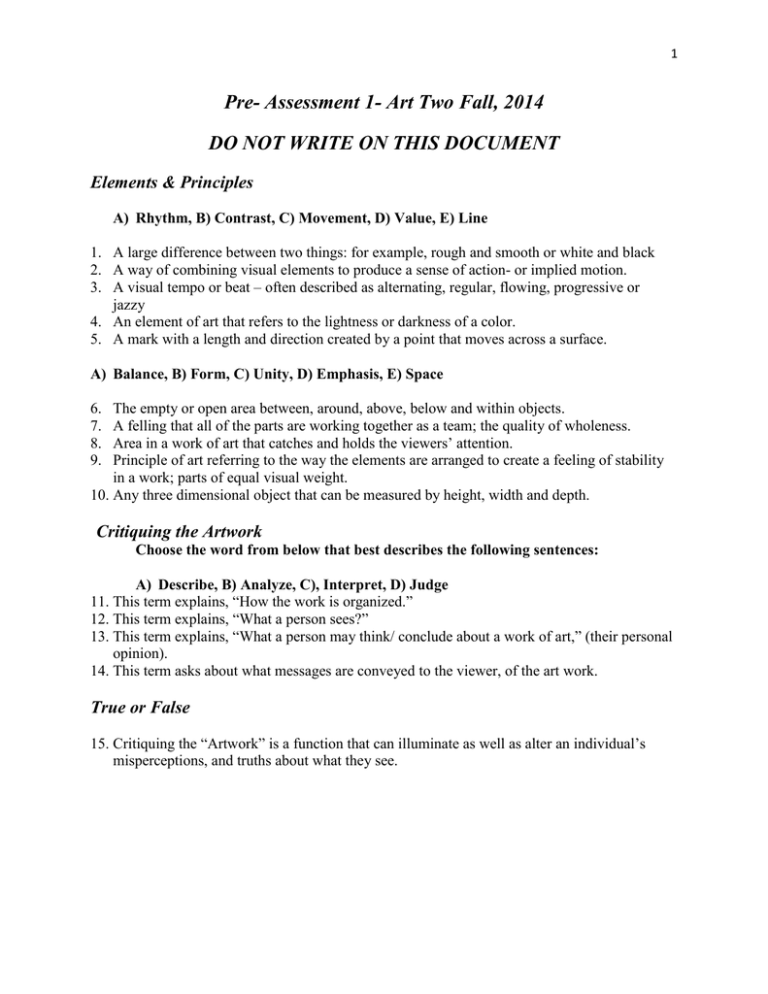
1 Pre- Assessment 1- Art Two Fall, 2014 DO NOT WRITE ON THIS DOCUMENT Elements & Principles A) Rhythm, B) Contrast, C) Movement, D) Value, E) Line 1. A large difference between two things: for example, rough and smooth or white and black 2. A way of combining visual elements to produce a sense of action- or implied motion. 3. A visual tempo or beat – often described as alternating, regular, flowing, progressive or jazzy 4. An element of art that refers to the lightness or darkness of a color. 5. A mark with a length and direction created by a point that moves across a surface. A) Balance, B) Form, C) Unity, D) Emphasis, E) Space 6. 7. 8. 9. The empty or open area between, around, above, below and within objects. A felling that all of the parts are working together as a team; the quality of wholeness. Area in a work of art that catches and holds the viewers’ attention. Principle of art referring to the way the elements are arranged to create a feeling of stability in a work; parts of equal visual weight. 10. Any three dimensional object that can be measured by height, width and depth. Critiquing the Artwork Choose the word from below that best describes the following sentences: A) Describe, B) Analyze, C), Interpret, D) Judge 11. This term explains, “How the work is organized.” 12. This term explains, “What a person sees?” 13. This term explains, “What a person may think/ conclude about a work of art,” (their personal opinion). 14. This term asks about what messages are conveyed to the viewer, of the art work. True or False 15. Critiquing the “Artwork” is a function that can illuminate as well as alter an individual’s misperceptions, and truths about what they see. 2 Use the reproduction below to answer the following questions. 16. In this painting, the artist use of repetition of similar shapes across the canvas creates a sense of: A)Movement, B) Form, C) emphasis, D) symmetrical, E) balance 3 17. In this painting, the artist has disrupted space by A) Covering the subjects shoulder with the background, B) Shading the right side of the subjects face, C) Depicting the subject form mid-thigh up, D) Depicting the subjects eyes looking downward. 4 18. Which of the following did the photographer use when framing this composition to place an emphasis on the house? A) The position of the clouds, B) The rows of the soil, C) The slope of the horizon, D) The texture of the ground. 19. 5 The artist use of lighter values in the upper section of the painting and darker values in the lower section has the effect of: A) B) C) D) Directing the viewers’ attention across the picture plane, Providing a sense of unity tot eh picture as a whole Creating a sense of two distinct environments Giving the work an overall positive mood 20. In the photograph above, the photographer uses perspective to explore: A) Form B) Scale, C) Texture, D) Shape Chose the word that best fits the following statements. A) Gothic, B) Renaissance, C) Neoclassicism, D) Impressionism, E) Expressionism 21. A style of architecture in which churches soared upward, used pointed arches, and had stainedglass windows 22. The period at the end of the middle ages when artist, writers, and philosophers were “reawakened” to art forms and idea from ancient Greece and Rome 23. An art style that borrowed subject matter and formal design qualities from the art of Greece and Rome 24. An art style that featured everyday subjects and emphasized the momentary effects of light on color. 25. An art style that emphasized the expression of innermost feelings
